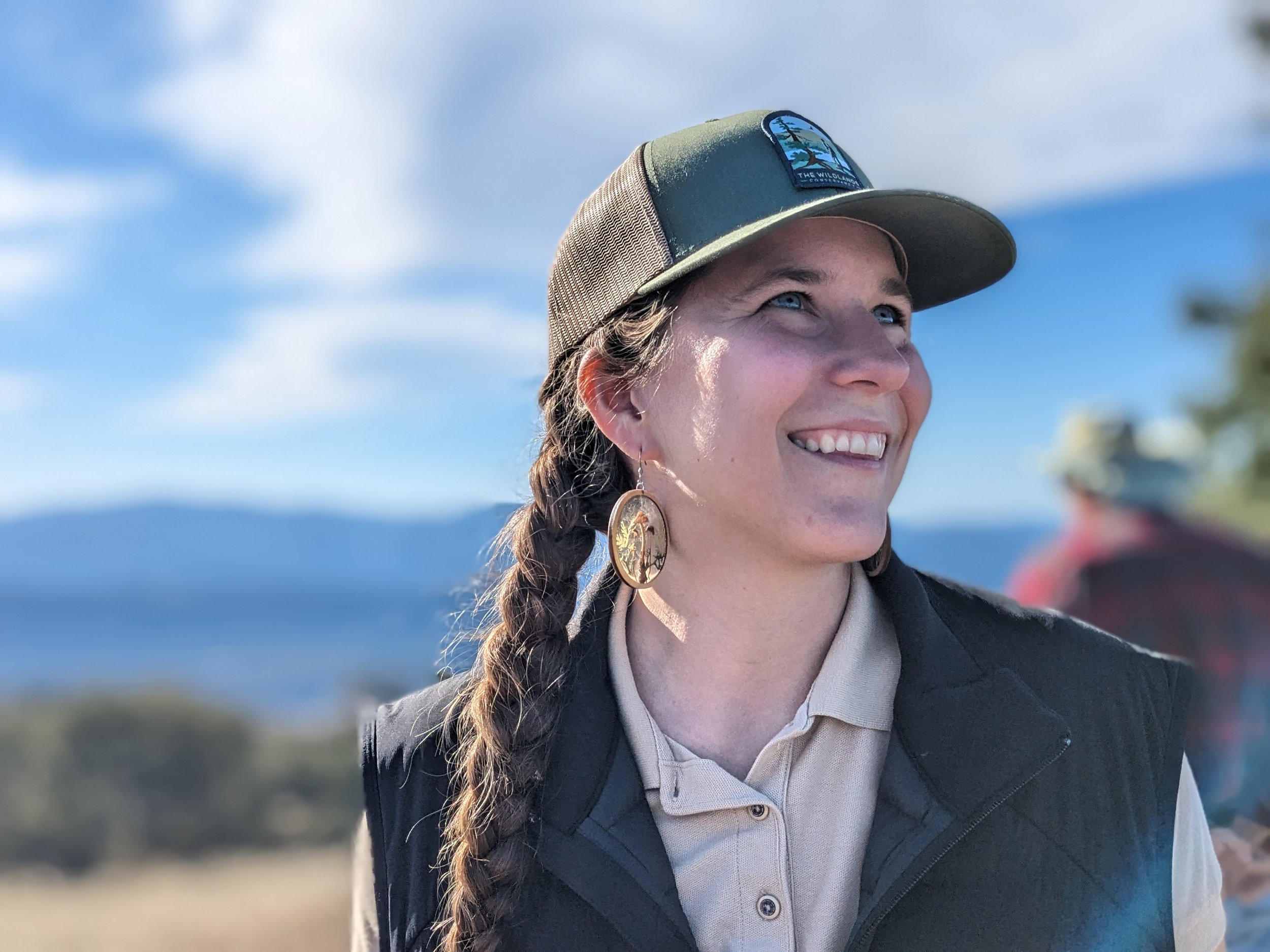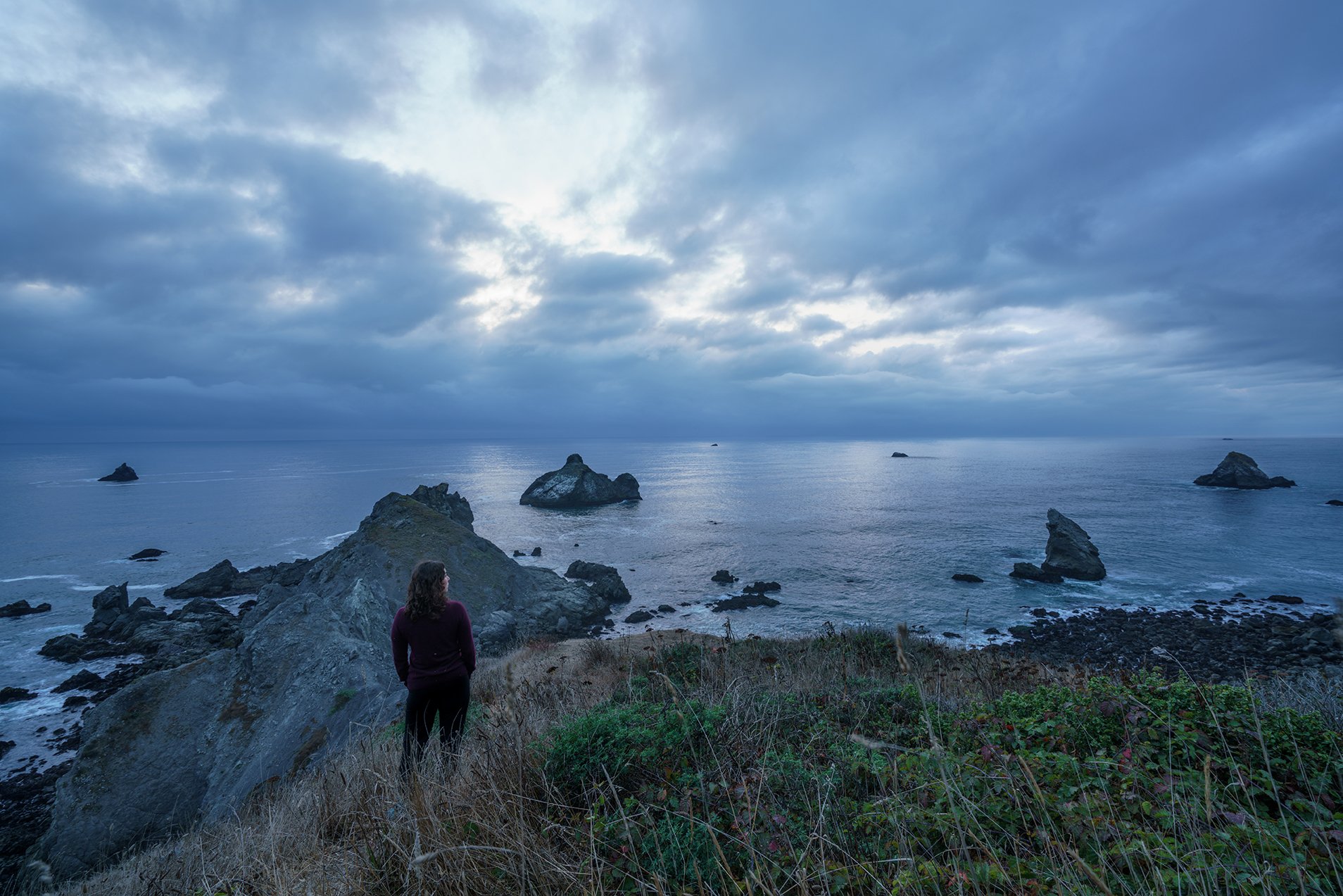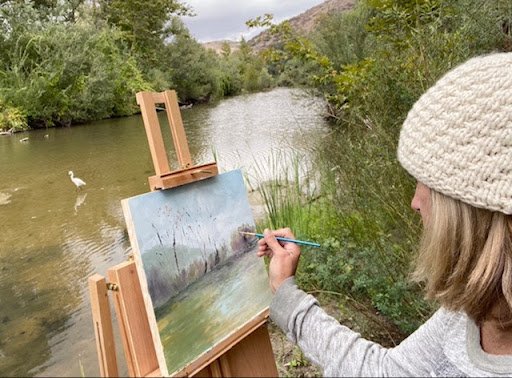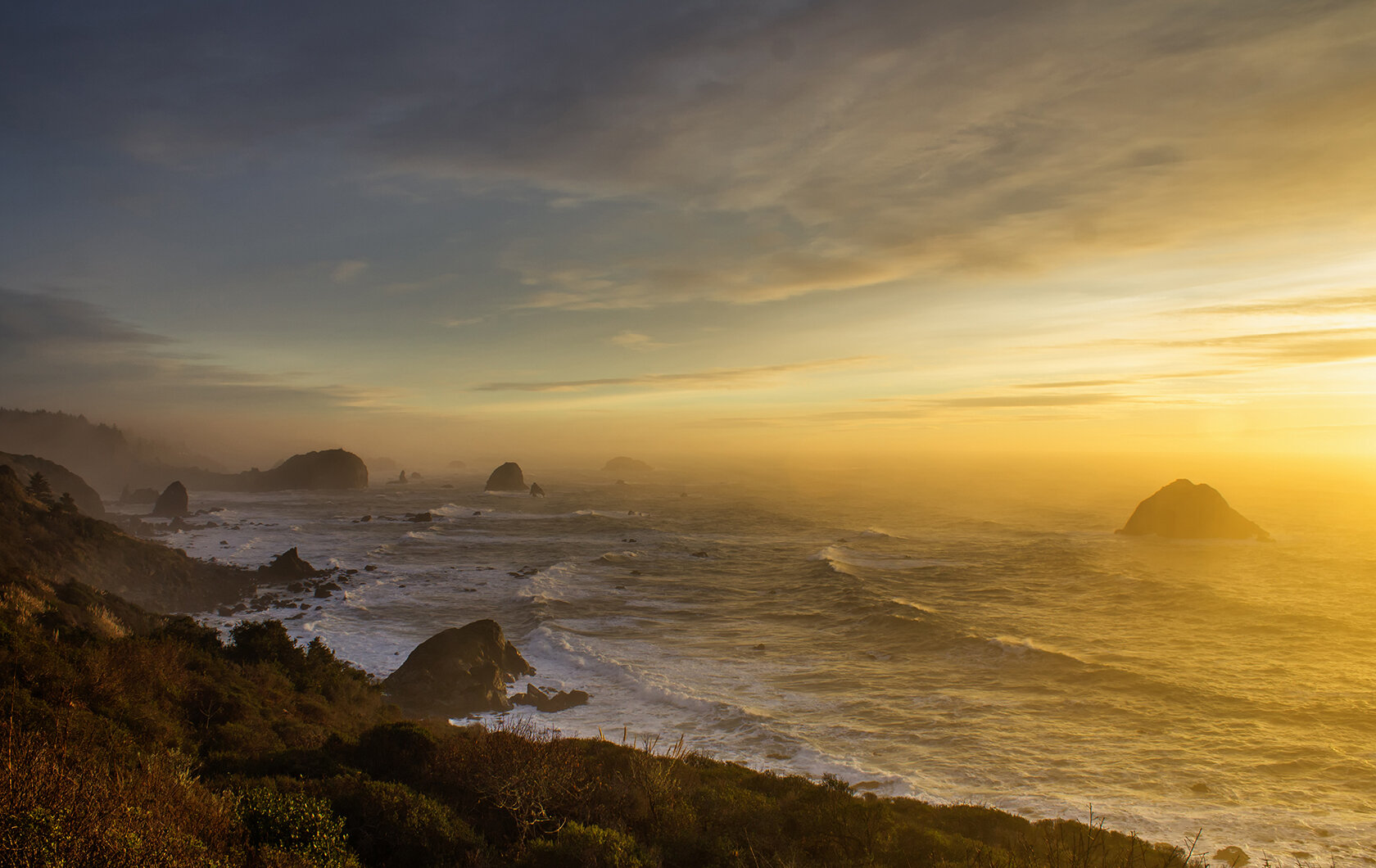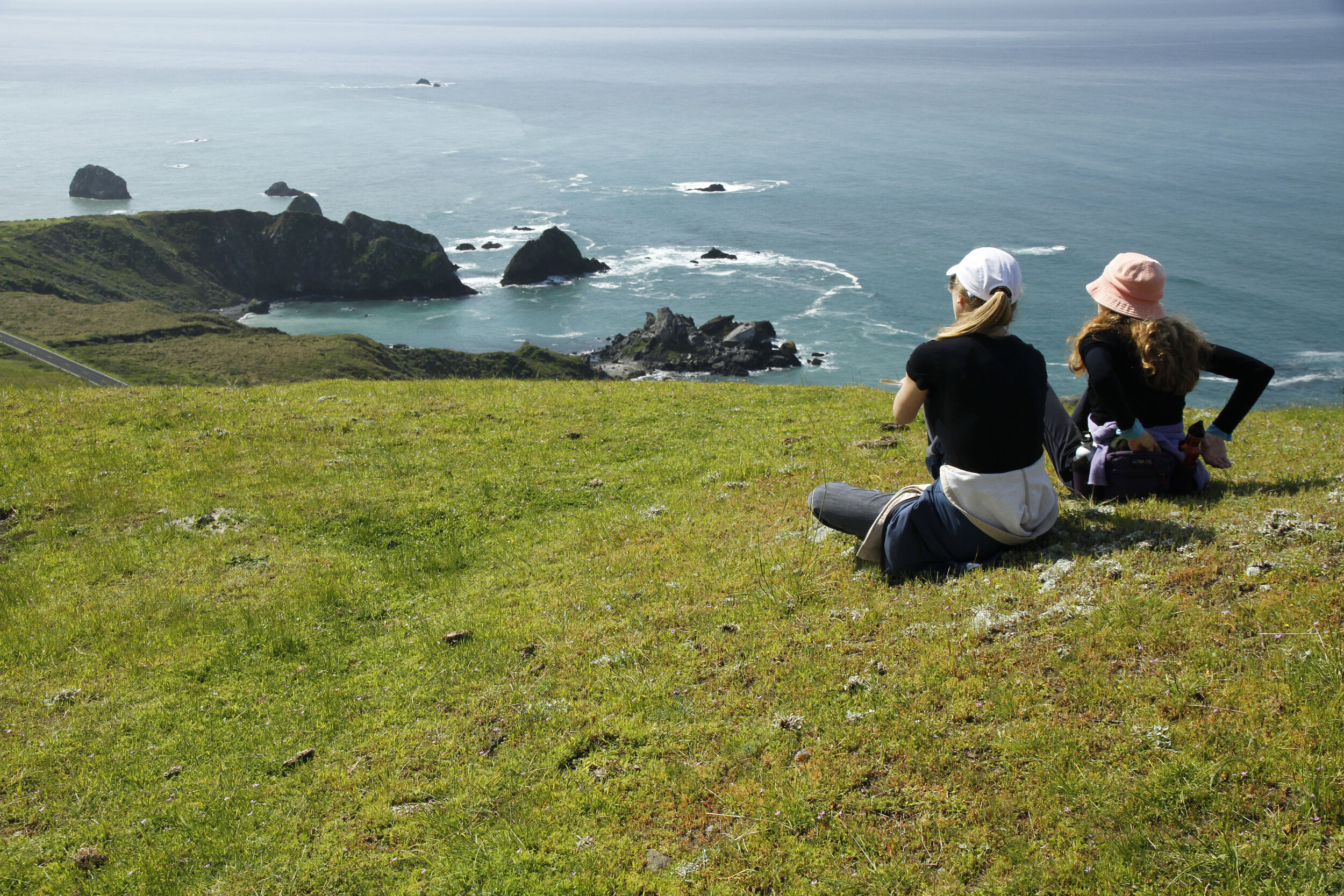
BEHOLD THE BEAUTY NEWSLETTER
News and updates from The Wildlands Conservancy.
NEXT ISSUE COMING SOON
Join the Behold the Beauty Association today to have the next issue delivered to your inbox.
You can also subscribe to updates from the preserve regions you visit most! Just select the subscriptions at the bottom of the form.
Recent Updates
A native to California, Kat has a deep respect and reverence for nature. Originally from San Diego, Kat studied fish, wildlife, and conservation biology at Colorado State University. Before attending university, she always dreamt of becoming a large animal veterinarian. However, through her ecology studies, she came to understand the connection between habitat degradation and animal extinction, a significant realization that altered her life path. “If I can restore the habitat, then the animals can restore themselves,” Kat says.
As many know, California saw profound impacts from Hurricane Hillary and The Wildlands Conservancy’s California Desert Preserves were no exception. As we rebuild, we are provided with an opportunity to reflect on the incredible resilience the preserves have shown in over two decades of fires, floods and a global pandemic. It is clearer now more than ever that our resilience is a direct reflection of the love we all share for these wonderful places and our dedication to sharing them with those that need them most.
While the term “rewilding” is growing in popularity, it’s not a novel concept at The Wildlands Conservancy. Our latest success is unfolding at Bluff Lake Reserve where we’ve reintroduced two critically endangered species, the unarmored three-spine stickelback and the mountain yellow-legged frog, revitalizing the hope of a future for these creatures.
Gazing up from Cottonwood Wash, multi-hued sandstone walls, frozen red and white rainbow layers, patinated with desert varnish, seize your attention, drawing your eyes as they rise hundreds of feet to where they suddenly meet impossibly blue skies. Wind and water, working together with time, have sculpted dizzying heights, angular features, and sheer surfaces.
“This is the best day ever!” A child shouts with joy as they return to the school bus after a long day of adventure on the trails.
Nearly every day during the school year you can visit Oak Glen, Whitewater, or Wind Wolves Preserve and be met with similar exclamations, with the sight of small groups of excited children, energy barely contained by their teachers and chaperones, gathered around a naturalist or docent who is guiding their exploration of the natural world. For many, our free Outdoor Discovery Program is their first experience connecting with nature that is not their own backyard or neighborhood park.
Dan DeKimpe embraces The Wildlands Conservancy mission to create access to nature through his funding of important public access projects each year. To ramp up his giving and really “move the needle,” he set a goal of 25x25: funding 25 projects by 2025.
The Wildlands Conservancy’s Experimental Oak Woodlands Preservation Project is a statewide Climate Action designed to address the decline of multiple oak species throughout all or a significant portion of their ranges because of land development, overgrazing, wildfires, non-native invasive species, oak pathogens, prolonged drought, and other impacts associated with climate change.
ON SHARING BEAUTY
DECEMBER 2021
If you receive this newsletter, you have probably been welcomed with a smile to one of our 22 magnificent preserves and reserves, or you have joined our free Behold the Beauty Association. Our protected lands now range from Seawood Cape Preserve on the North Coast, to the largest undammed river at Santa Margarita River Trail Preserve on the South Coast, to the flower-permeated Southern California Montane Botanic Garden at Oak Glen Preserve, to the glistening trout-filled waters of Two Rivers Reserve in the Eastern Sierra Nevada.
After a two-and-a-half-year effort, with support from private donors, volunteers, state agencies, partner organizations, and elected leaders The Wildlands Conservancy is proud to announce it has secured the 26,600-acre Lone Pine Ranch along 18 miles of the National Wild and Scenic Eel River.
Over the years, The Wildlands Conservancy’s Outdoor Education programs at its keystone preserves—Whitewater, Oak Glen, and Wind Wolves—have grown and evolved to better serve local communities and provide even more opportunity for “children to know the wonder and joy of nature.”
Whitewater Preserve has faced particular challenges in providing free outdoor education to students, families, and individuals in the Coachella Valley. Despite closures due to natural disasters—a major flood in 2019, and the Water Fire in 2020—and the Covid-19 pandemic, the outdoor education team at Whitewater continued to develop programs in an uncertain environment.
In 1998, The Wildlands Conservancy signed an agreement with the California Department of Fish and Game (DFG) to relocate tule elk to our Wind Wolves Preserve. The Preserve is the southernmost extension of tule elk’s historic range before they were decimated by the California Gold Rush and the agricultural land rush that soon followed. Thought to be extinct, six elk survived under the protection and foresight of Henry Miller, a rancher. By 1998, California’s indigenous tule elk had rebounded to over 3,100 elk, and DFG projected the tule elk population would increase significantly on Wind Wolves Preserve’s 93,000 acres of prime habitat.
When The Wildlands Conservancy saved historic Los Rios Rancho-from development in 1996, we envisioned creating a special place where people could connect with each other and nature in a meaningful way. Today, Oak Glen Preserve, home of the Southern California Montane Botanic Garden and Children’s Outdoor Discovery Center, is that vision come to life. Each year hundreds of thousands of visitors walk the trails through more than a dozen botanic garden venues, each representing a unique native habitat, and each providing an engaging interpretive experience for kids of all ages.
California’s coho salmon, Oncorhynchus kisutch, have been in a serious state of decline since the mid 20th Century. Factors such as habitat loss, hatchery genetics, overexploitation, and climate change are the leading causes of their diminishment. The extreme droughts experienced in the last decade mean critical action must be immediately taken. By focusing efforts on key coho locations there is still hope for this iconic California fish.
Pioneertown was named after a row of wood façade-fronted buildings on “Mane Street,” built in 1946 for filming western movies. When the Pioneertown film corporation defaulted on a loan, 10,000 acres of spectacular rock formations, volcanic mesas, pinyon pine-forested mountains and Joshua tree-covered flats, were foreclosed on by the owners of two Los Angeles car dealerships. The heart of this 10,000 acres was Pipes Canyon, a rare water-blessed canyon on the edge of the Mojave Desert.
The Wildlands Conservancy’s visitorship is at the heart of its mission. Each year, more than 1.6 million people visit one, or more, of Wildlands’ 22 diverse preserves and reserves – completely free of charge. From California’s rugged coast to its quiet forests and pristine deserts, visitors – like you – are inspired by these iconic landscapes. We, in turn, are inspired by you. Thank you for being a part of our work.
ON THE BEAUTY OF WATER
AUGUST 2021
When The Wildlands Conservancy purchases a new preserve we look for “destination properties”—properties that you, our visitors, are naturally drawn to. One of the reasons 1.6 million visitors a year are drawn to our 21 preserves is because each of them has the soothing and inspirational draw of beautiful waters.
The Wildlands Conservancy has five preserves on the coast, where our visitors are invigorated by the thunderclap of waves, being splashed by the rolling tides, sharing the palm-tickle of a sand crab with their children, watching barking sea lions, or swimming, fishing, and surfing in the world’s largest ocean—the Pacific. Seven preserves are on major rivers; five where you can enjoy summer days swimming, fishing, kayaking, or wading in the Earth's refreshing waters. Seven other preserves have musical streams that guide your thoughts to a blissful place—if you stop to listen. Two reserves—Bearpaw and Mariposa—have over 100-foot-tall seasonal spring waterfalls.
Stretching along 18.5 miles of the Wild and Scenic Eel River in northern California and encompassing nearly 30,000 acres, the Lone Pine Ranch will provide new access to the future Great Redwood Trail, wild river frontage, and host a variety of passive recreation opportunities.
Dotted with freshwater wetlands, deep forests, two herds of Roosevelt Elk, and splendid seasonal wildflower blooms, protection of this landscape will advance our vision of an Eel River Emerald Necklace—a string of Preserves along the river that protect and provide access to the region.
In late July, The Wildlands Conservancy’s design team set out to learn how we could create additional opportunities for visitors to experience a connection, especially with the water of Bluff Lake, as most of the immediate shoreline is closed to the public to protect habitat. To balance access with habitat protection, we focused on an area with existing impacts from social trails and storm damage. The “Lago Tranquilo” trail was born from that brainstorming session.
Have you ever sat before a waterfall, quieted your thoughts, and simply watched it closely? Or sat beside a stream, looking carefully at the water rippling past you? Or stood at the ocean’s edge and witnessed the waves heroically crashing—or softly lapping—at the ends of the land? Or watched silently as the winds were made visible across a pond’s surface? Or looked up in the sky and surrendered to a rainfall, drenching your face and clothes? These moments are opportunities to experience water-blessed beauty. When we are open to them, these visits with Nature can be great nourishment to our minds, or powerful teachers to our spirits—often both.
RELAX IN THE EASTERN SIERRAS
Thanks to the generous support of a donor, there is a parking lot and river-side trail at Aspen Glen Reserve in Mono County. The property provides fishing access to a mile of the West Walker River from the new parking lot on the south side of Larson Lane, a half mile east of Highway 395.
ADVOCATING FOR BEAUTY
APRIL 2021
The Wildlands Conservancy (TWC) uses an almost forgotten word within our core tenets for managing our preserves: "Imparadise!" To "imparadise the earth" is "to make into paradise," "to enrapture," or "to transport into another state." Although this may sound like Don Quixote tilting his lance at windmills, it’s really about people like yourself employing their minds and muscles to beautify the world around them.
One of the first steps TWC employs after acquiring a new preserve is to remove all the offenses to the eye, restoring the landscape back to its natural Beauty.
Every person who visits the outdoors has stories to tell about time spent with family, seeking adventures in the mountains, or watching the skies change color at sunset. For those who have enjoyed the benefits of wild places and the beauty of wide-open vistas only to later watch them become fragmented with development, the urge to protect the natural world can become all consuming. While it’s easy and enjoyable to appreciate the natural beauty of places as a visitor to them, when one becomes engaged in the public dialogue about their future, conflict is almost inevitable.
Spring is in the air, signaling warmer temperatures and the perfect time to plant natives for a late spring bloom.
Native plants are an important resource for pollinators like bees and butterflies.
Not sure what native plants will work in your garden...or even a pot on your patio? Check out some of the native plant resources to learn more.
BEHOLD THE BEAUTY WITHIN US
DECEMBER 2020
ON SAVING BEAUTY
OCTOBER 2020
Friends, we all know the compassion in helping our children save a weather-beaten monarch butterfly or rescuing an abandoned dog or cat. We do these acts of kindness simply because it’s in our hearts to do.
Devastating, unnatural, human caused fires, severely impacted three of The Wildlands Conservancy’s Sand to Snow Preserves over the past weeks.
Up the canyon creek that descends from the rocky face of Wilshire Peak above Oak Glen, beyond a series of abrupt and unscalable waterfalls, there lives a fellowship of ancient canyon oaks. Among these grows one tree, officially measured and recognized as the largest specimen of all oak species.
At the time of this writing, many of us are stunned at the fact that wildfire effects have touched most people living in the western United States. As many of you may know, some of The Wildlands Conservancy’s Southern California preserves have not escaped this fire season unscathed.
In the early morning hours of September 9th, sight became sound in the Bearpaw Reserve. The El Dorado Fire had crept down from the ridge and was slowly burning through the understory, working its way to within feet of us before being shoveled over or watered down. Occasional flare-ups lit the sky and a persistent tawny glow illuminated our work.
The wildfires consuming California this summer are not only devastating the unique Beauty of the state, they are also releasing record amounts of carbon dioxide into the air, contributing to further climate disruption.
How can you help offset the damaging effects of these wildfires?

